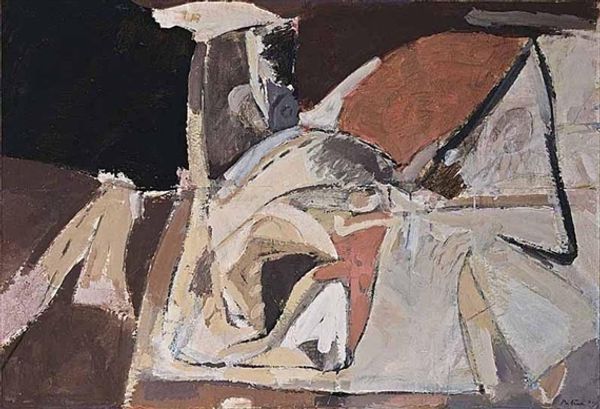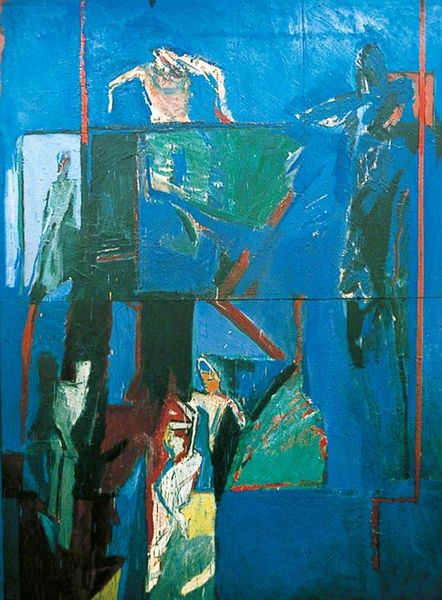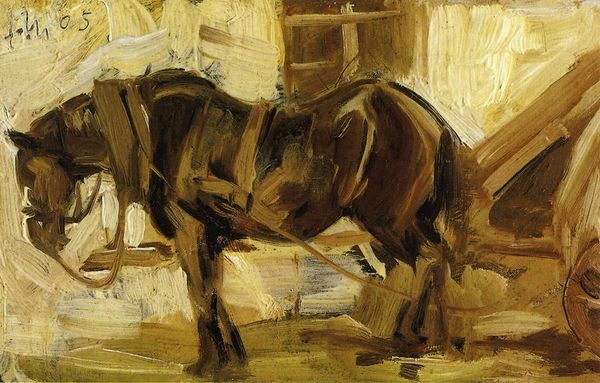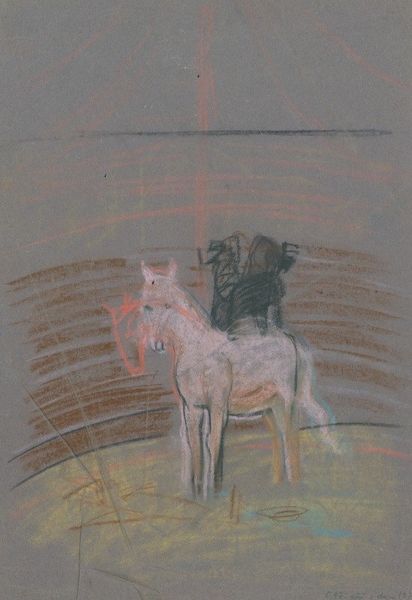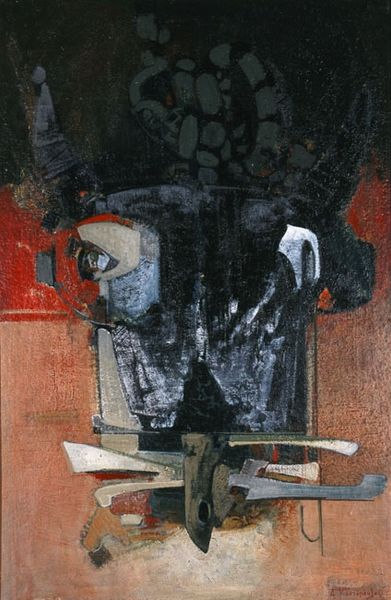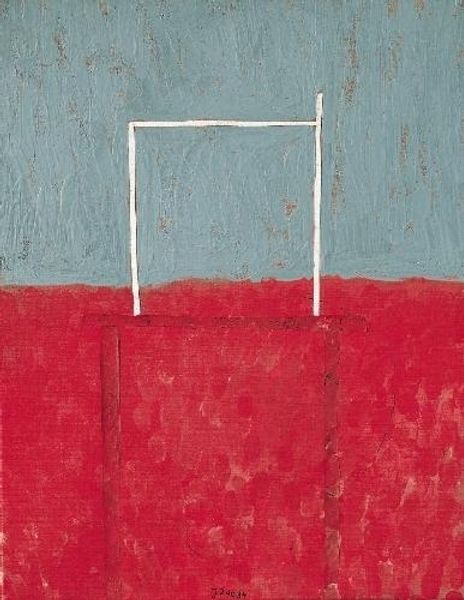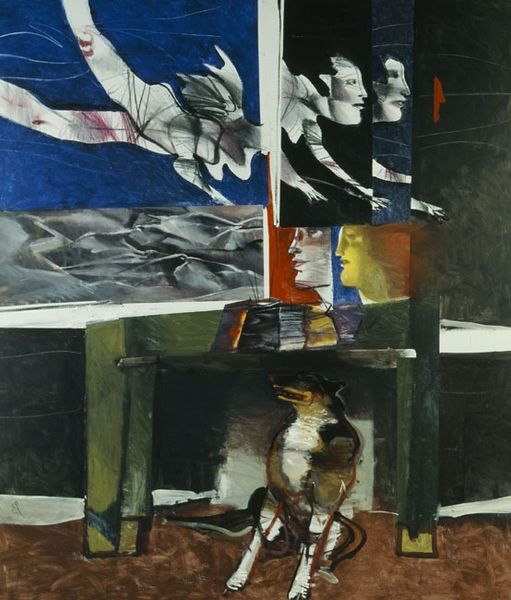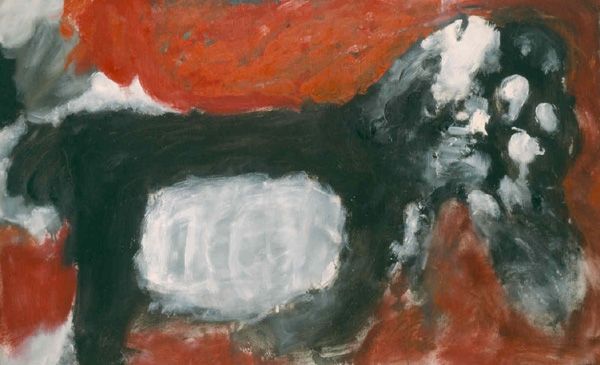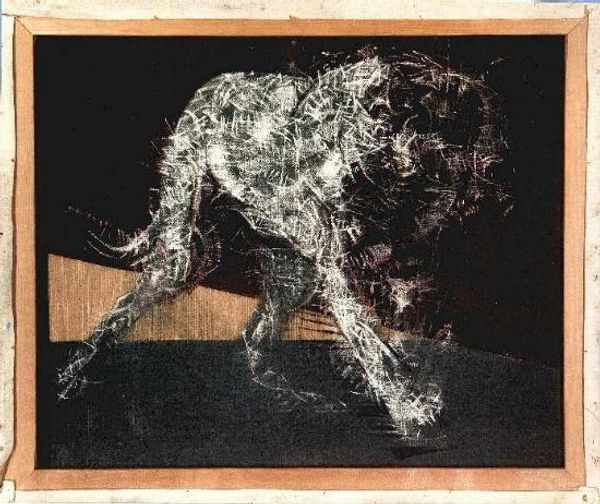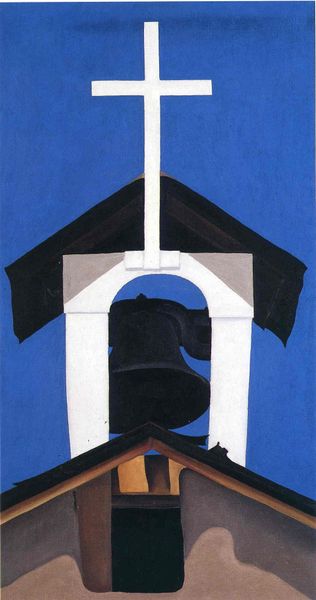
Dimensions: 199 x 138 cm
Copyright: Francis Bacon,Fair Use
Curator: The piece before us is Francis Bacon’s "Dog," an oil on canvas created in 1952. It's a striking image. Editor: It is immediately unsettling. The isolation of the dog figure, that muted palette... a very solitary, anxious mood. Curator: Bacon's work, particularly during this period, reflects the anxieties of post-war Europe, doesn't it? The dog becomes a symbol of vulnerability within that. Look how Bacon positions the dog in this constructed geometric space. This could echo how the state and various institutions confine people within strict and often dehumanizing systems. Editor: The geometry is undeniably dominant; these insistent red lines forming cells. But the dog is hardly contained; it almost melts into the composition with the broad, fluid strokes. The colours are doing interesting things, too, because despite their muteness they are full of contradiction and discordance. Curator: He worked during a time when figuration was being questioned, particularly in light of abstraction. Bacon uses figuration, but he distorts it. He pushes it to this almost unbearable limit of representation. Do you think that choice made a wider impact at the time it was unveiled? Editor: Absolutely, but from a Formalist standpoint, observe how the dynamism comes through despite a seemingly simple colour scheme. It’s through that almost violent application of the brushwork, with the texture so raw, so palpable. This wasn't only challenging conventional modes of representation, it asked serious questions about form. Curator: Bacon challenges what art can and should be reflecting and interrogating the darkest aspects of our shared experience. What resonates is its visceral power, and this dog feels very alive, even in its isolation. It almost brings us closer to feeling our own internal animal, that part of us society encourages to lock away. Editor: A fitting and evocative consideration! It reminds us that, like the very best art, a seemingly direct and intimate engagement can invite new dialogues, unlocking fresh ways to interpret our interior self and immediate world.
Comments
No comments
Be the first to comment and join the conversation on the ultimate creative platform.

